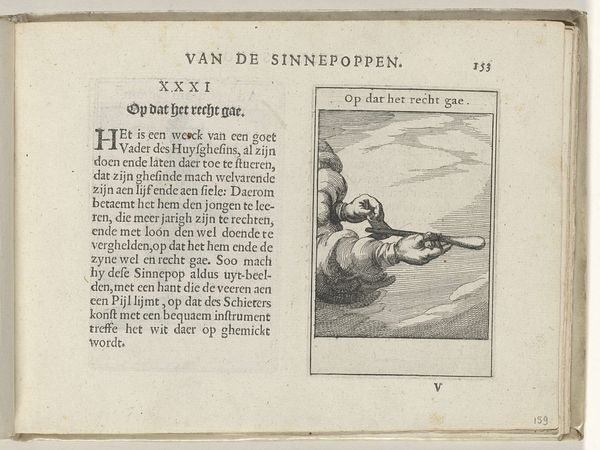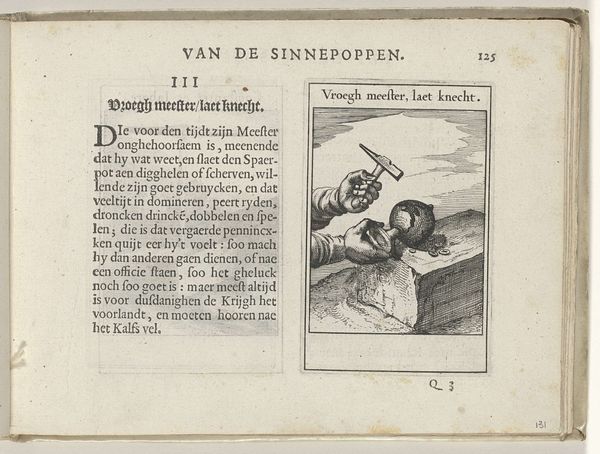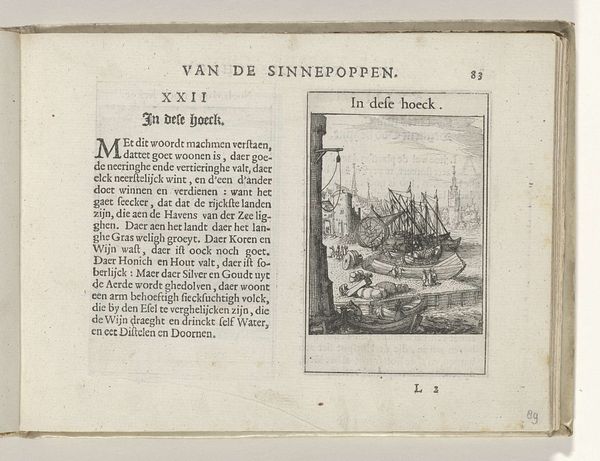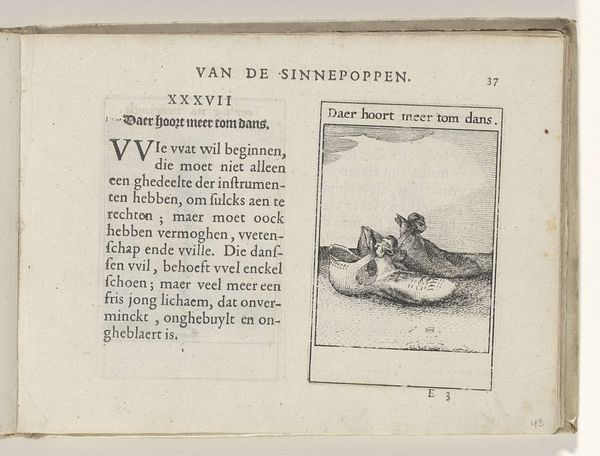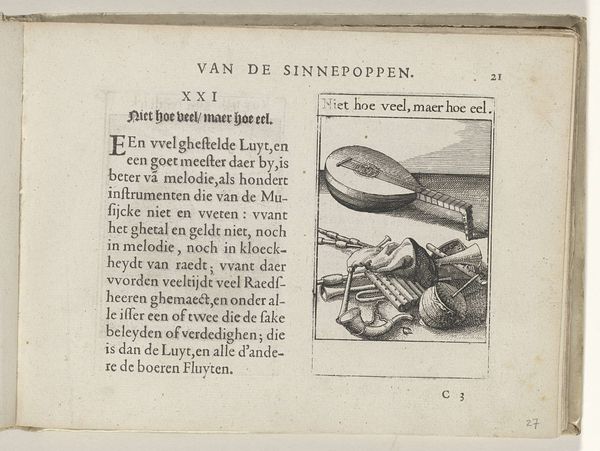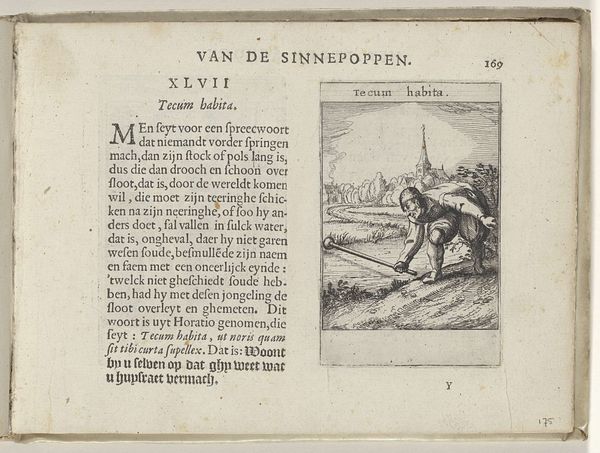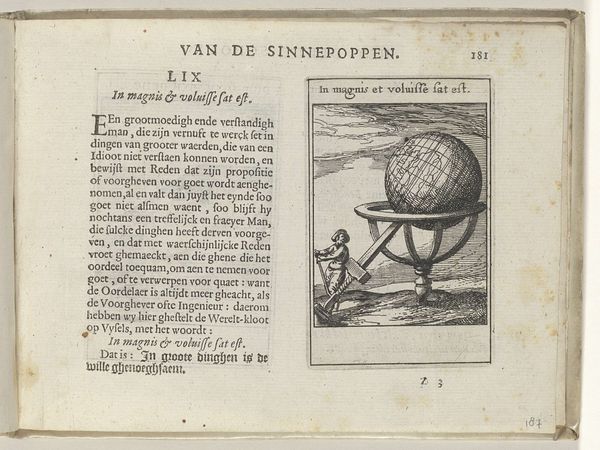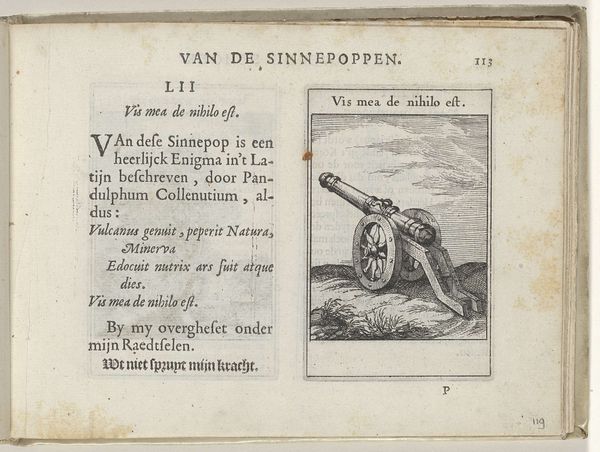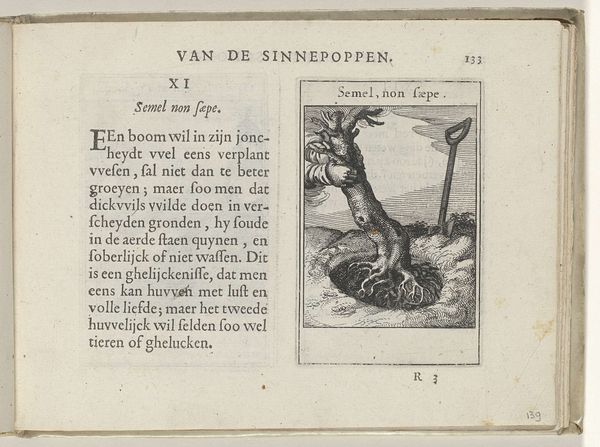
drawing, print, ink, engraving
#
drawing
#
aged paper
#
toned paper
#
dutch-golden-age
# print
#
old engraving style
#
sketch book
#
figuration
#
personal sketchbook
#
ink
#
pen-ink sketch
#
ink colored
#
sketchbook drawing
#
storyboard and sketchbook work
#
sketchbook art
#
engraving
Dimensions: height 137 mm, width 188 mm, height 95 mm, width 60 mm
Copyright: Rijks Museum: Open Domain
Curator: Before us, we have Roemer Visscher's engraving "XL Leert het u kinderen niet" from 1614, held here at the Rijksmuseum. It’s a fascinating example of Dutch Golden Age printmaking. Editor: The image struck me immediately as stark, almost haunting. The crab dominates the foreground, but there's a sense of… unease? Like something isn’t quite right. Curator: Visscher often embedded moralizing messages in his art. Looking closer, this image is a visual proverb – a commentary on parental influence, with the title translating to "Do not teach your children". Editor: So, the crab becomes a symbol... perhaps representing parents who themselves embody undesirable behaviors. Its sideways movement, alluded to in the text adjacent, becomes symbolic of errant behaviour and influence. Curator: Exactly. Consider the items around the crab—the playing cards, and other signifiers. These allude to gambling and vice. The overall piece serves as a critique of hypocrisy, where parents warn against behaviors they themselves partake in. Editor: This resonates strongly with the historical context. The 17th century in the Netherlands saw burgeoning mercantile success and new ideas that destabilized traditional roles and family structures, leading to societal anxieties about moral education. It challenges those in authority... the very social contract between parents and their children. Curator: And yet, isn’t the endurance of such moralising symbols remarkable? They seem to point to enduring human failings as much as specific societal shifts. Editor: The genius of the image resides in that very layering of symbolism. The crab, games of chance and dice-- these hold so much associative meaning. Visual elements carrying a weighty historical understanding over centuries, making Visscher’s critique both deeply personal and universally recognizable. Curator: Seeing Visscher's work through this lens, exploring themes of identity, parental example, societal expectation, reveals such surprising intersections. Editor: Absolutely. These early emblems invite an interrogation of our values today, reminding us how potent a singular symbol can remain.
Comments
No comments
Be the first to comment and join the conversation on the ultimate creative platform.
